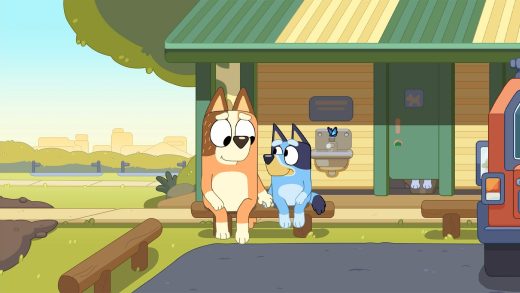Got some bad news for you, on the off chance your bad news supply chain is breaking down. American publishers have gone on a spending spree in hopes of snagging breakout books spawned by the coronavirus pandemic. “Three months into the biggest public health and economic crisis of our era,” The New York Times reports, “authors and publishers are racing to produce timely accounts of the coronavirus outbreak, with works that range from reported narratives about the science of pandemics and autobiographical accounts of being quarantined, to spiritual guides on coping with grief and loss, to a book about the ethical and philosophical quandaries raised by the pandemic, written by the Slovenian philosopher Slavoj Žižek.”
The operative words in that sentence are racing and timely because they point to an irony that can be viewed as an axiom: writing that’s forged in the cauldron of a crisis almost always winds up being undercooked. A writer racing to be timely is, by definition, not pausing to digest, muse, rethink, revise. Some of the forthcoming writing about the pandemic might throb with immediacy, but the bulk of it will likely be solipsistic and slapdash, especially the fiction and diaries and, ugh, those autobiographical accounts of being quarantined. In this case, writing that’s timely is likely to be ephemeral, destined to fade soon after the virus runs its course or gets vanquished by a vaccine. Remember the immediate wake of the 9/11 terrorist attacks, all those proclamations that irony was dead? Irony didn’t merely rise from the ashes of the Twin Towers; it went on to become the gyroscope of much contemporary fiction, sometimes for better, mostly for worse, and by now it has become a universal mechanism for coping with day-to-day life in a rattled world. And that was before this pandemic descended.
Some of the forthcoming plague books might prove me wrong, especially the nonfiction titles about the economic fallout of the pandemic, frontline accounts from overwhelmed hospitals, forensic studies of how the virus took root in human hosts, and a forthcoming collection of case studies of how Covid-19 and other infectious diseases spread. (The question must be asked: who’s racing to write the books about cooking, binge TV watching, pet grooming, and Donald Trump’s golf scores during this pandemic?)
Far less promising is the coming glut of personal accounts, whether they’re fiction, poetry, diaries, or journals. Exhibit A: the ongoing “Pandemic Journal” series in The New York Review of Books, which features writers all over the world sending in personal dispatches. These accounts blur after a while because they swim in a soup of sameness and lack the specificity that brings writing to life. When everybody in the world is doing the same thing, just how unique or interesting can it be? For instance, we learn that there are chronic toilet paper shortages in both London and Sydney (and, I’m guessing, in every other hamlet on the planet). Ali Bhutto writes from Karachi that the usual hum of traffic coming through the bedroom window “has been replaced by silence” (Ditto here in downtown Manhattan). Liza Batkin writes from Rhinebeck, N.Y., that she had to pause to ask her mother if she should dry the dishes with a dish towel or a paper one (I know the feeling). Christopher Robbins writes from New York that “a playground writhing with children in 60-degree weather feels downright sinister” (Got that right). If I know these feelings, do I benefit from knowing that millions of other people know them, too?
Exhibit B: a recent issue of The New York Times Magazine, which features a roster of writers relating “What We’ve Learned in Quarantine.” Among the predictable lessons are that many people liken quarantine to being in prison or at war, yet there are salutary rewards to be found in such solitary activities as braiding your own hair, learning to play the piano, watching birds, and photographing your daughters. Most of these accounts barely rise to the level of tepid uplift, and they’re further proof just how difficult it is to say something wise, or even original, about a pandemic. If you doubt this, I present Exhibit C: a recent essay in The New York Times Book Review by Michiko Kakutani, who was struck by the eerie silence and emptiness of the streets in New York, which, she reminds us, used to be known as “the city that never sleeps.” When the high priestess of American lit crit is reduced to borrowing clichés from Ol’ Blue Eyes, you know you’re in trouble. Kakutani then reminds us just how primitive life was in 17th–century London when the bubonic plague descended: “There was no Purell back then, no Clorox wipes or Lysol spray, no grocery deliveries from Fresh Direct and Whole Foods, no Netflix or Roku to help pass the time.” Thanks for the heads-up, Michiko!
Now I’d be the last person to knock writers who have the good sense and the good luck to get paid for their work. So on one hand, I say bravo to all the writers with freshly inked contracts for pandemic books. On the other hand, I would like to make a simple plea, especially to the writers of poetry and fiction: don’t rush, take your time, let the current horrors seep in deep before you try to make art out of this nightmare we’re all living through. For inspiration, novelists and poets and short story writers should look at the examples set by two writers, one from the 18th century, the other working today.
Daniel Defoe took his time before writing about his era’s horrific calamity, publishing A Journal of the Plague Year almost 50 years after the bubonic plague ravaged London in 1665. The book purports to be a first-person account of that grim year, and its rich detail and plausibility led many readers to regard it as a work of nonfiction rather than what it was—a deeply researched work of imaginative historical fiction. (Defoe was five years old during the plague.) The Nobel laureate Orhan Pamuk has spent the past four years researching and writing an historical novel called Nights of Plague about an outbreak of bubonic plague that killed millions in Asia in 1901, more than a century ago. Before putting pen to paper, Defoe and Pamuk had the good sense to let time do its work of giving traumas context and perspective.
Back on April 8, Edan Lepucki, a gifted novelist and one very funny mother of three, imagined the “least anticipated” fiction that might come out of the pandemic that was then beginning to unleash its ghastly fury. If ever there was a time that demanded a good laugh, this was it. And Lepucki delivered, imagining novels with such titles as Social Distance Warrior, The Spread and my personal favorite, Stay-at-Home Mom. This last, in Lepucki’s overheated imagining, is the story of a woman named Hannah who’s cooped up in her tiny Brooklyn apartment with her husband and daughter and feels her sanity slipping. Slipping so badly, in fact, that “sometimes she imagines cutting off her own arms and legs and hoisting her bleeding torso into her rollaway suitcase and zipping it up (with her teeth) and rotting there forever.” (After being cooped up in my tiny apartment for 11 weeks, I know the feeling.) “And,” Hannah muses, “how all this is better than her old publishing job where she was regularly expected to kiss the egomaniacal asses of Bookstagrammers who never read the novels they posed next to succulents and mugs of bone broth.” Now there’s a novel coronavirus novel I would pay good money to read.
Image Credit: health.mil.
Bonus Link:
— On Pandemic and Literature
The post Please! Hold Off on That Novel Coronavirus Novel! appeared first on The Millions.










